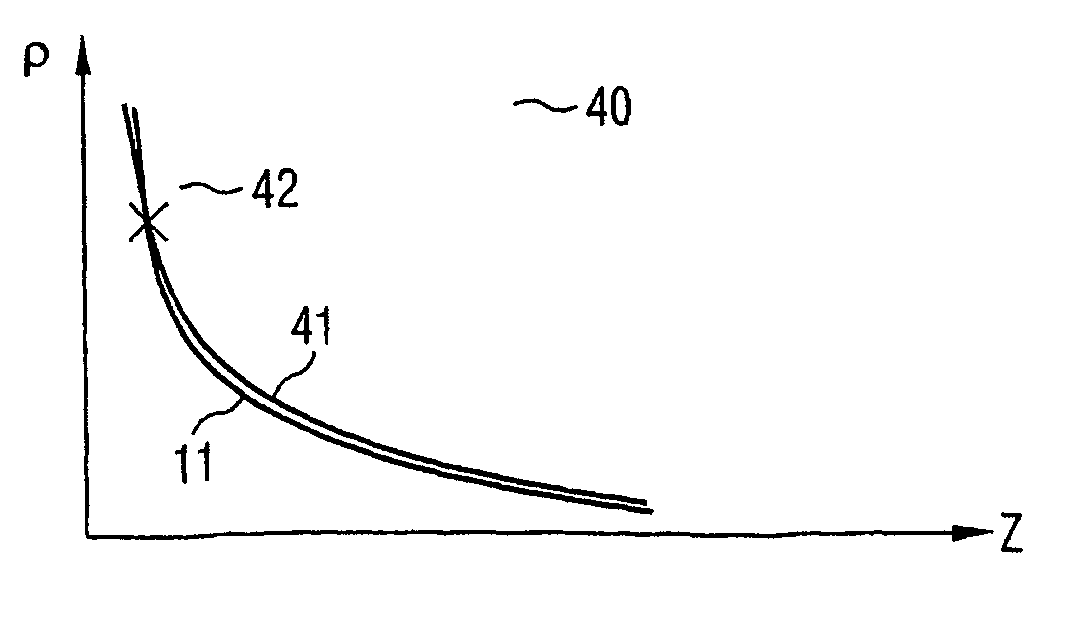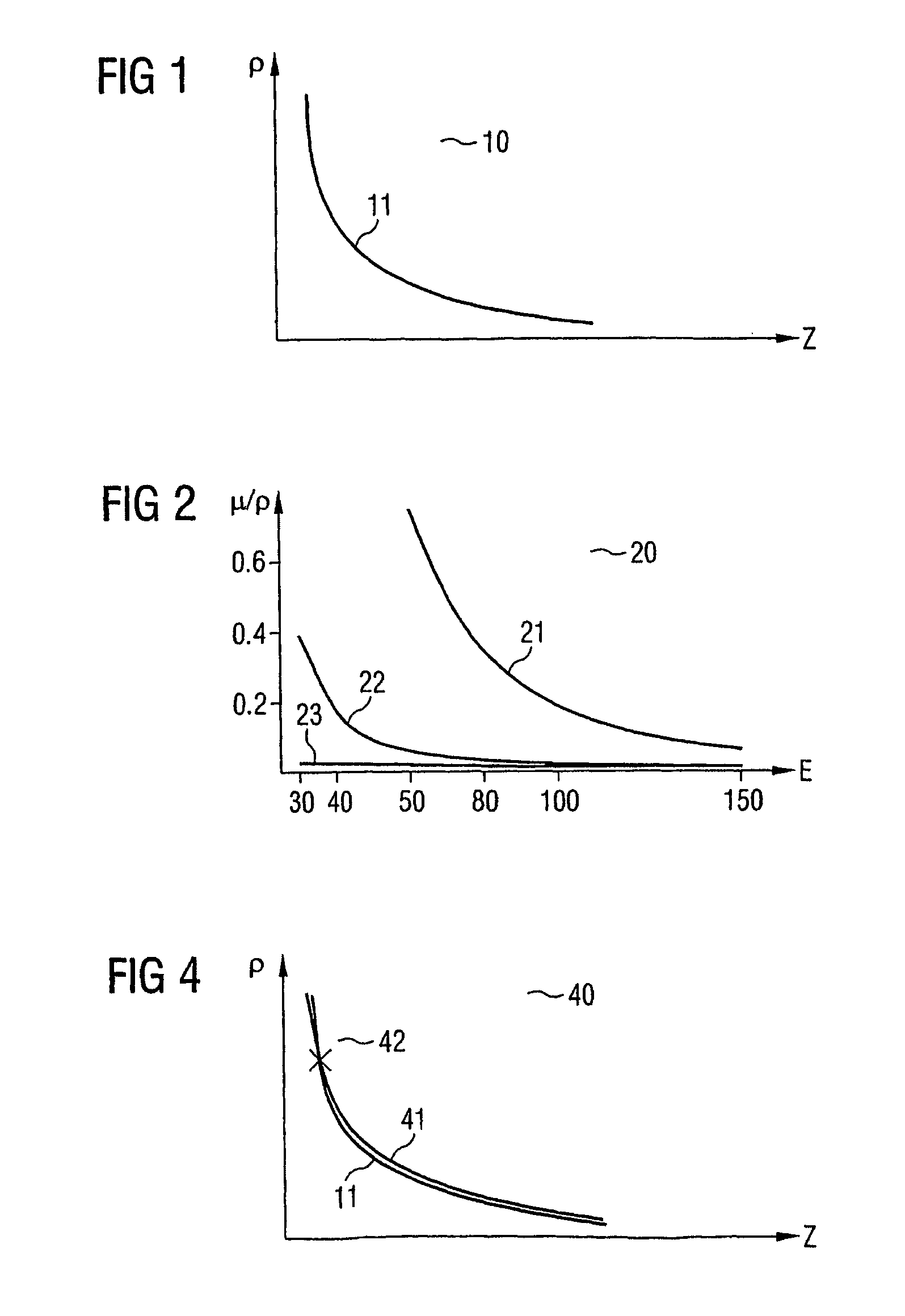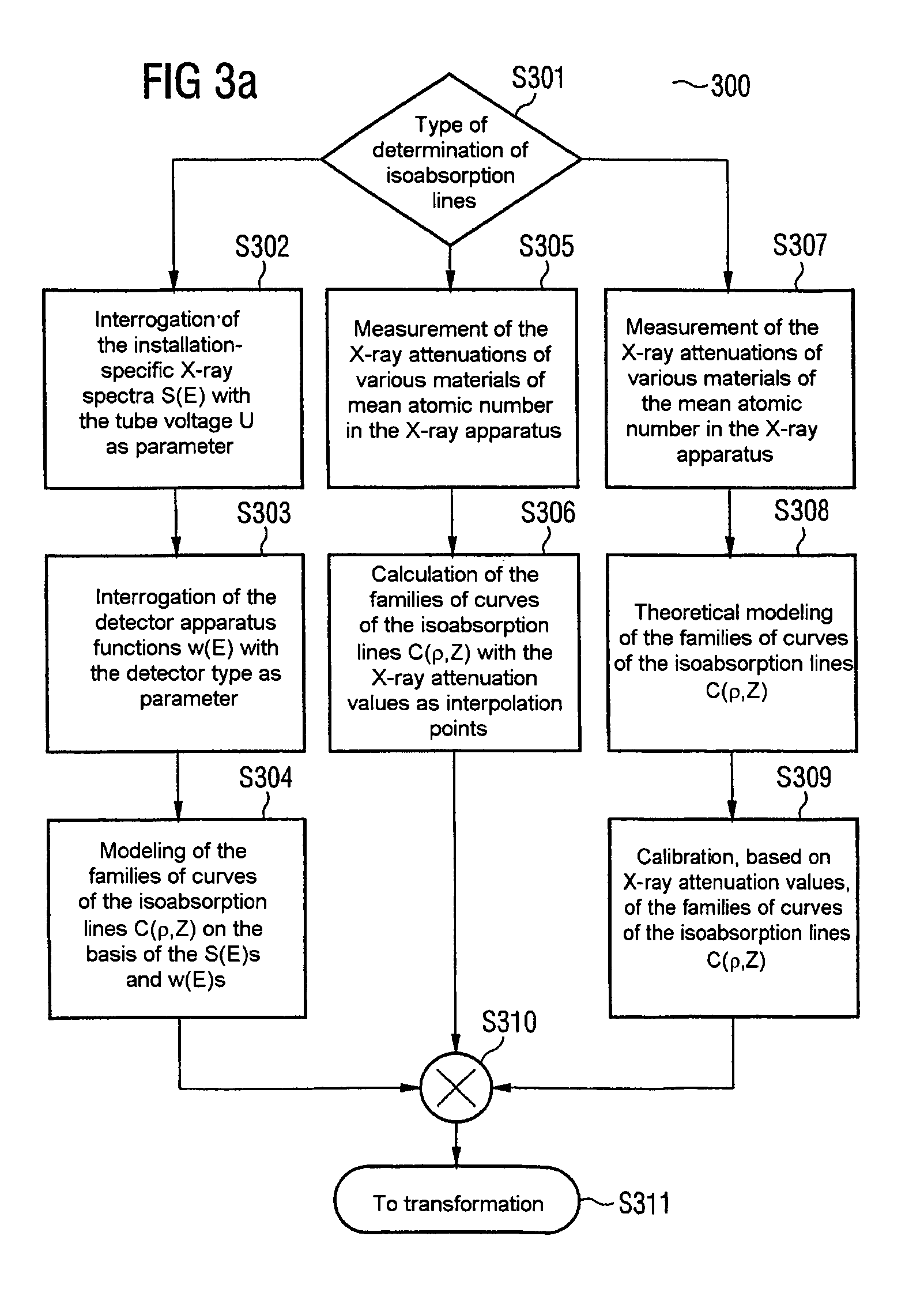Method for determining density distributions and atomic number distributions during radiographic examination methods
a density distribution and radiographic examination technology, applied in the field of x-ray apparatus, can solve the problems of inability to clearly distinguish between calcification close to the hilus on a thorax overview picture, inability to deduce the material composition and inability to determine the structure of an object to be examined from the attenuation value in an x-ray picture. achieve the effect of satisfying th
- Summary
- Abstract
- Description
- Claims
- Application Information
AI Technical Summary
Benefits of technology
Problems solved by technology
Method used
Image
Examples
Embodiment Construction
[0040]The isoabsorption line 11 of diagram 10 of FIG. 1 connects all value pairs (ρ, Z) having an attenuation value μ or C identical for a defined X-ray spectrum. The illustration of FIG. 1 makes clear that information on the nature and composition of a tissue or material cannot be derived solely on the basis of the attenuation values of an X-ray image. Usually, in order to identify types of tissue in the X-ray image, a radiologist makes use of his anatomical knowledge and looks for irregularities on this basis. In order to clarify the identity of the irregularities, a medical practitioner is then forced in turn to appeal to empirical values and morphological criteria. Similarly, a person skilled in the art of materials testing and safety testing will base his judgment of the radiographic finding on his store of professional experience.
[0041]X-radiation is attenuated to a greater or lesser extent by different materials and as a function of the energy of the X-radiation. FIG. 2 illus...
PUM
| Property | Measurement | Unit |
|---|---|---|
| atomic number | aaaaa | aaaaa |
| energy | aaaaa | aaaaa |
| density | aaaaa | aaaaa |
Abstract
Description
Claims
Application Information
 Login to View More
Login to View More - R&D
- Intellectual Property
- Life Sciences
- Materials
- Tech Scout
- Unparalleled Data Quality
- Higher Quality Content
- 60% Fewer Hallucinations
Browse by: Latest US Patents, China's latest patents, Technical Efficacy Thesaurus, Application Domain, Technology Topic, Popular Technical Reports.
© 2025 PatSnap. All rights reserved.Legal|Privacy policy|Modern Slavery Act Transparency Statement|Sitemap|About US| Contact US: help@patsnap.com



